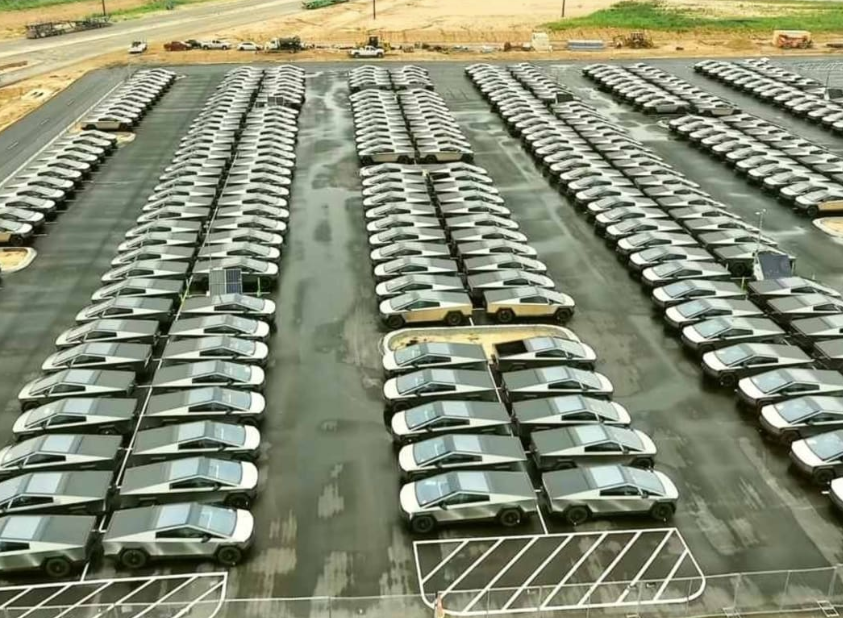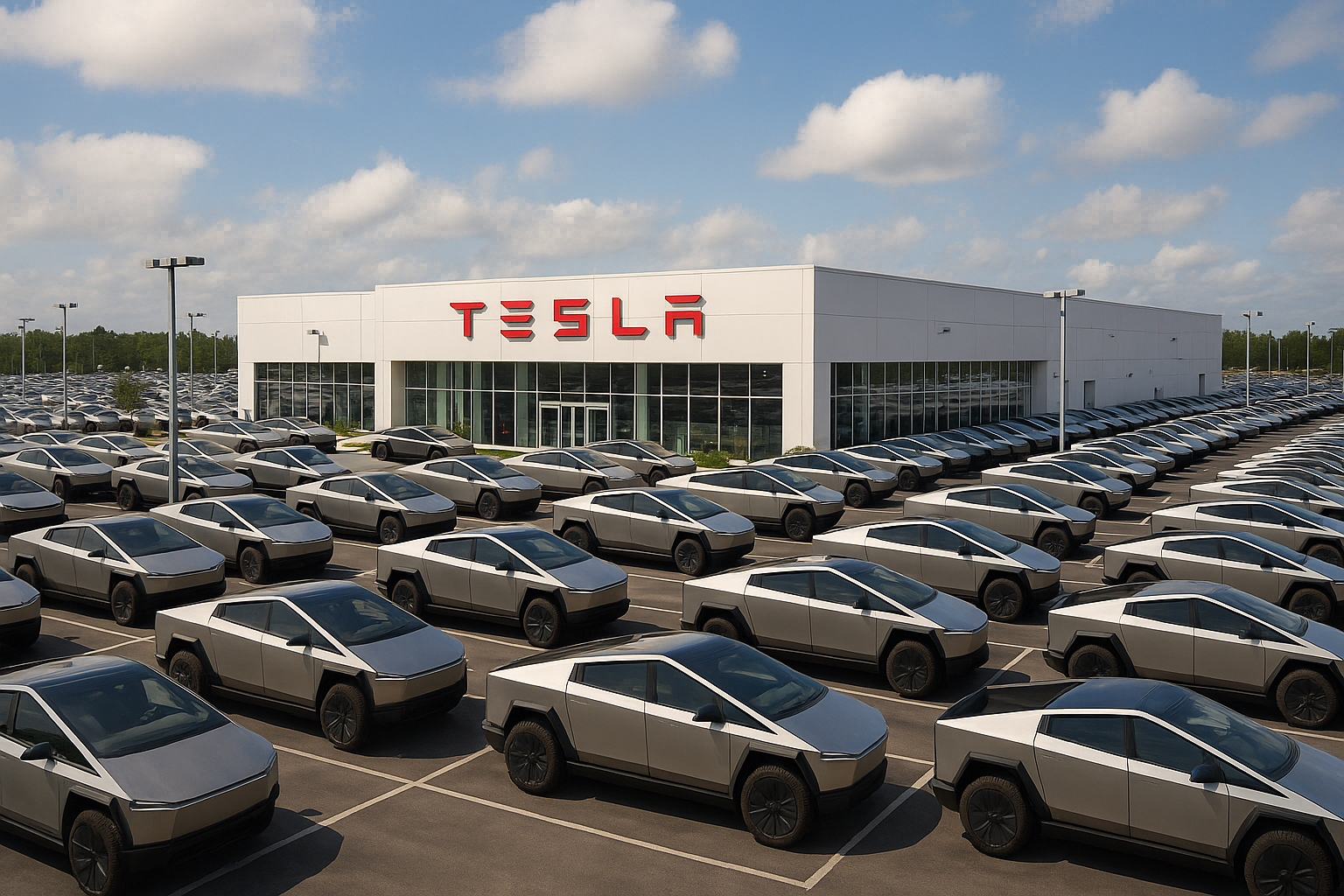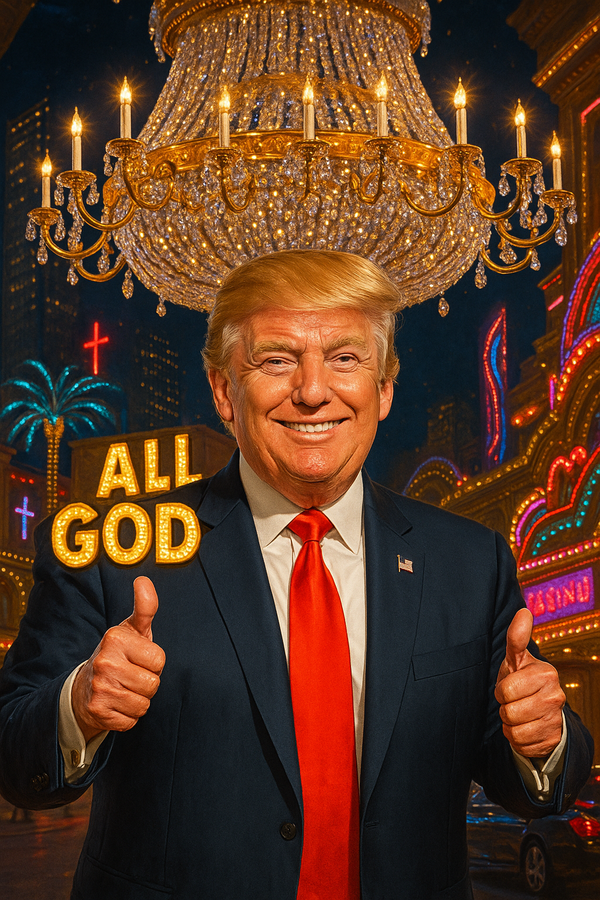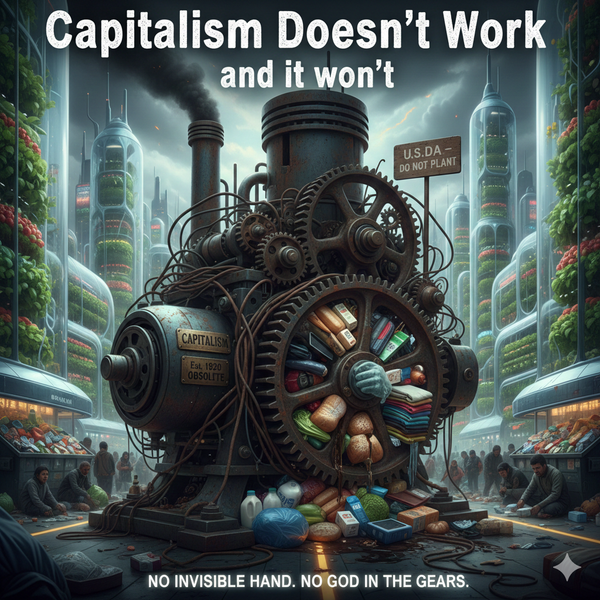Tesla(2)

Tesla's Death Spiral
The empire is crumbling, and those who refuse to see it will pay the price.
Tesla's financial outlook isn't just poor—it's catastrophic. The company that once defined electric vehicles is now being systematically dismantled by its own incompetence, its CEO's political delusions, and competitors who actually know how to build cars.
The Numbers Don't Lie
Sales are hemorrhaging globally. Tesla's U.S. market share fell from 51% to 44% in one year while overall EV sales grew 11%. Their dominance in Europe has evaporated—sales dropped 46% in Germany, 62% in the UK, and Tesla lost European market share for six consecutive months. In China, their collapse is even more brutal: market share plummeted from over 16% in 2022 to just 4.3% by February 2025.
Auto revenue crashed from $19.9 billion to $16.7 billion year-over-year. Net income plummeted 71% to $2.3 billion. Gross profit per vehicle fell to around $5,102—down 29% year-over-year. Tesla risks per-vehicle gross profit falling below $5,000 unless they cut production costs below $34,000 per vehicle or reverse their declining prices. The company that once printed money is heading back toward losing it.
Competition Has Arrived
General Motors doubled their EV sales and is capturing Tesla's market share with models like the Chevrolet Equinox EV. China's BYD has emerged as the real threat, selling 318,000 electric and hybrid cars in February alone—a 161% increase. BYD has outsold Tesla for two quarters running, making them the world's leading EV manufacturer.
Tesla's first-mover advantage has evaporated. They're no longer the disruptor—they're the disrupted.
Production Hell Never Ended
Tesla's manufacturing promises remain fiction. The vaunted Optimus robot program is in shambles—the head of the program quit, production is delayed at least two months, and the robots they've built are "less than half as efficient as human workers." Tesla Semi prices reportedly jumped from $180,000 to over $400,000—a "dramatic" increase killing orders. Even their cheaper Model Y variant got delayed by at least three months.
The Cybertruck reveals the depth of Tesla's delusion. Initially planned for 250,000 units annually, they're selling only 20,000 per year. Musk bragged about its "exoskeleton" design—an external structural frame that supposedly eliminated the need for a traditional body. Then Tesla had to recall every single unit because the glued-on panels started falling off. An "exoskeleton" held together with adhesive that fails in normal use. Tesla now refuses to accept Cybertrucks as trade-ins—a policy no other manufacturer has ever instituted. When a company won't take its own product back, that product is worthless.

The Musk Disaster
Here in California, I've witnessed the Cybertruck failure firsthand. Tesla dealership lots are packed with unsold trucks. One mall has a section of its parking lot serving as unofficial overflow storage for Cybertrucks nobody wants. These aren't inventory—they're evidence of catastrophic demand failure.
Picture a massive Tesla dealership lot, rows upon rows of angular chrome monstrosities gleaming under the California sun. The electric future, parked like tombstones. Tesla built the Cybertruck like they were designing a refrigerator—all angles, no soul. But there they sit, waiting for someone to pay six figures for the privilege of looking like they're driving a failed sci-fi prop from 1982.

It's not about trucks. It's about signaling. Each angular monstrosity represents someone desperate to announce they've got enough money to waste on ugly. The kind of person who thinks innovation means making something deliberately hideous and calling it "disruptive." Meanwhile, actual truck drivers—the ones who haul things, fix things, build things—they're still buying F-150s. Because when you need to work, you don't buy a sculpture.
At least when the power grid fails, that dealership lot will have enough battery capacity to run a small city. Assuming anyone can figure out how to jumpstart a truck that looks like it was assembled from kitchen appliances. The future is electric. Apparently, it's also pretentious as hell.
More telling: Tesla owners are paying to have the Tesla emblems removed from their cars, the holes filled and painted over. Others display bumper stickers reading "I bought this before Elon lost his mind." When customers buy your product and immediately try to hide that fact, your brand is dead.
Musk torched his own customer base. Tesla's primary buyers are coastal liberals—environmentally conscious professionals who bought into the clean energy vision. Then Musk embraced trump, amplified conspiracy theories, and turned his company into a right-wing political platform. He attacked the very people who made Tesla successful.

Tesla's "consideration score" fell from 70% in November 2021 to just 31% in February, partly due to Musk's toxic reputation. The man who built his fortune selling cars to Democrats decided Democrats were the enemy. Even analysts are telling Tesla's board to tie Musk's pay to actual time spent at the company rather than his political "endeavors."
Policy Headwinds
Federal EV tax credits expire September 30, 2025. Tesla also lost regulatory credit revenue, which fell from $890 million to $439 million year-over-year. Musk warned of "a few rough quarters" due to higher tariff costs. The company that once benefited from government support now faces a hostile policy environment.
The Camera-Only Delusion
But Tesla's problems run deeper than sales and production failures. The company's camera-only approach to autonomous driving represents perhaps the most dangerous technical decision in automotive history—one that physics makes impossible to solve.
Every major autonomous vehicle company except Tesla uses multiple sensor types because cameras alone can't do the job. Physics doesn't care about Musk's cost-cutting. Cameras can't measure depth directly—they have to guess. When rain hits, all cameras fail simultaneously. Glare blinds them. Fog stops them cold. These aren't software problems. They're the laws of physics.
Waymo deploys 13 cameras, 4 LiDAR sensors, and 6 radar units because redundancy saves lives. Ford's CEO calls LiDAR "mission critical." Even Mobileye, the camera specialists, requires radar and LiDAR backup systems. The industry consensus isn't just large—it's unanimous.
Tesla's camera-only system has documented over 700 crashes and 58+ deaths. NHTSA is investigating 2.4 million vehicles for systematic failures in reduced visibility. Independent testing shows the system requiring intervention every 13 miles. Meanwhile, Musk calls LiDAR "a crutch" while his cars plow into stationary objects his cameras can't see.
The technical community's verdict is clear: Tesla's approach violates basic safety engineering principles. When your entire perception system uses the same technology, environmental conditions that affect one camera affect them all. It's a single point of failure in a safety-critical system—exactly what automotive engineers spend their careers preventing.
The Inevitable Conclusion
Tesla is no longer an automotive company—it's a political statement that customers are desperately trying to disown. The Cybertruck was supposed to be their moonshot. Instead, it's their Edsel—a monument to corporate delusion and a CEO who stopped listening to anyone who might tell him the truth.
Those packed lots aren't waiting for customers. They're waiting for the fire sale.
Real car companies with actual manufacturing expertise are eating Tesla's market share while Tesla burns billions on robotaxis that travel on the wrong side of the road, robots that can't match human efficiency, and camera-only systems that physics says will never work. The emperor has no clothes, and now everyone can see.
Tesla's decline isn't temporary market volatility. It's the systematic destruction of a company by its own leadership. Investors who fail to recognize this reality will learn the expensive difference between innovation and delusion.
The writing isn't on the wall—it's spray-painted across every Tesla lot in America.





